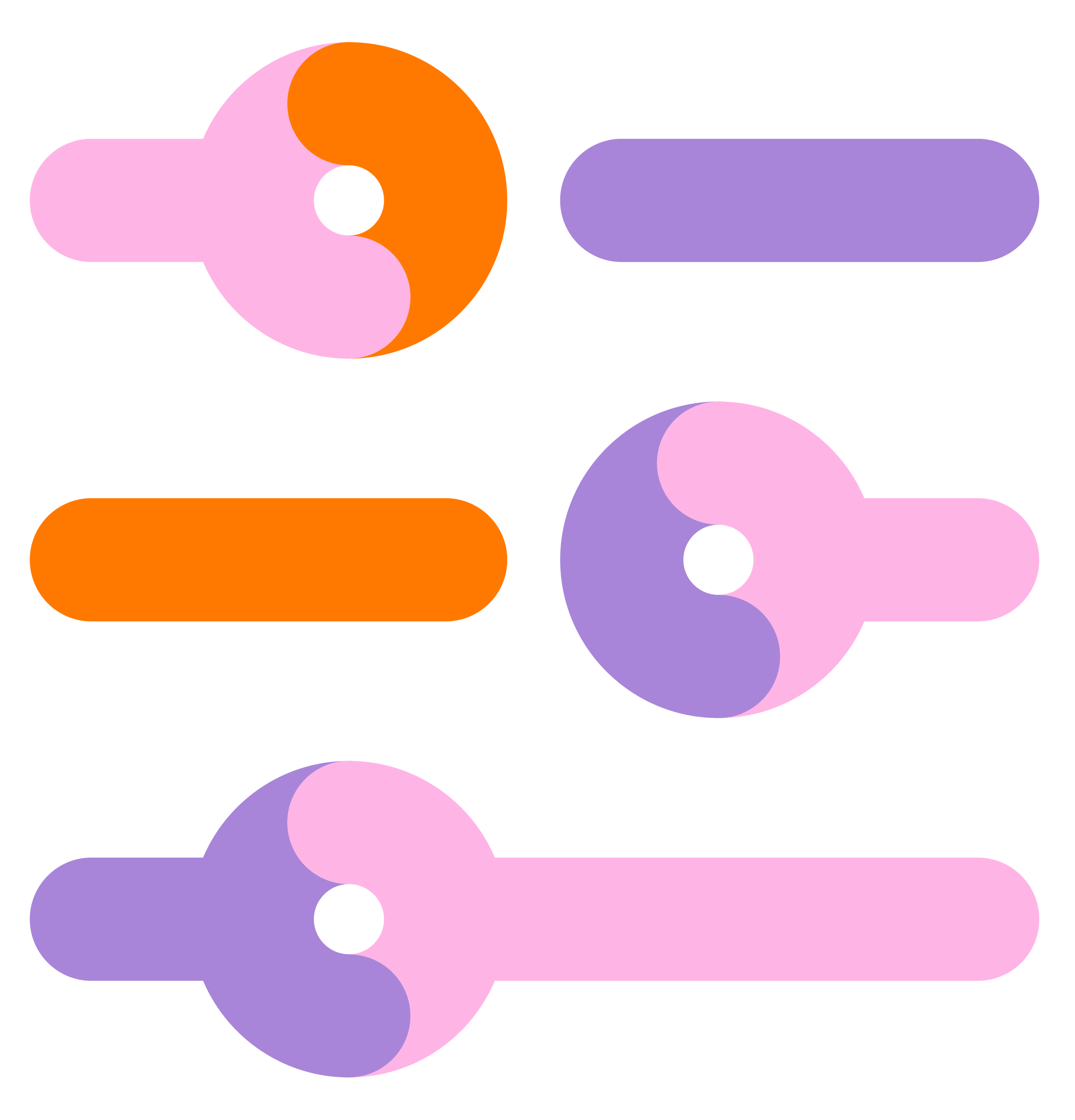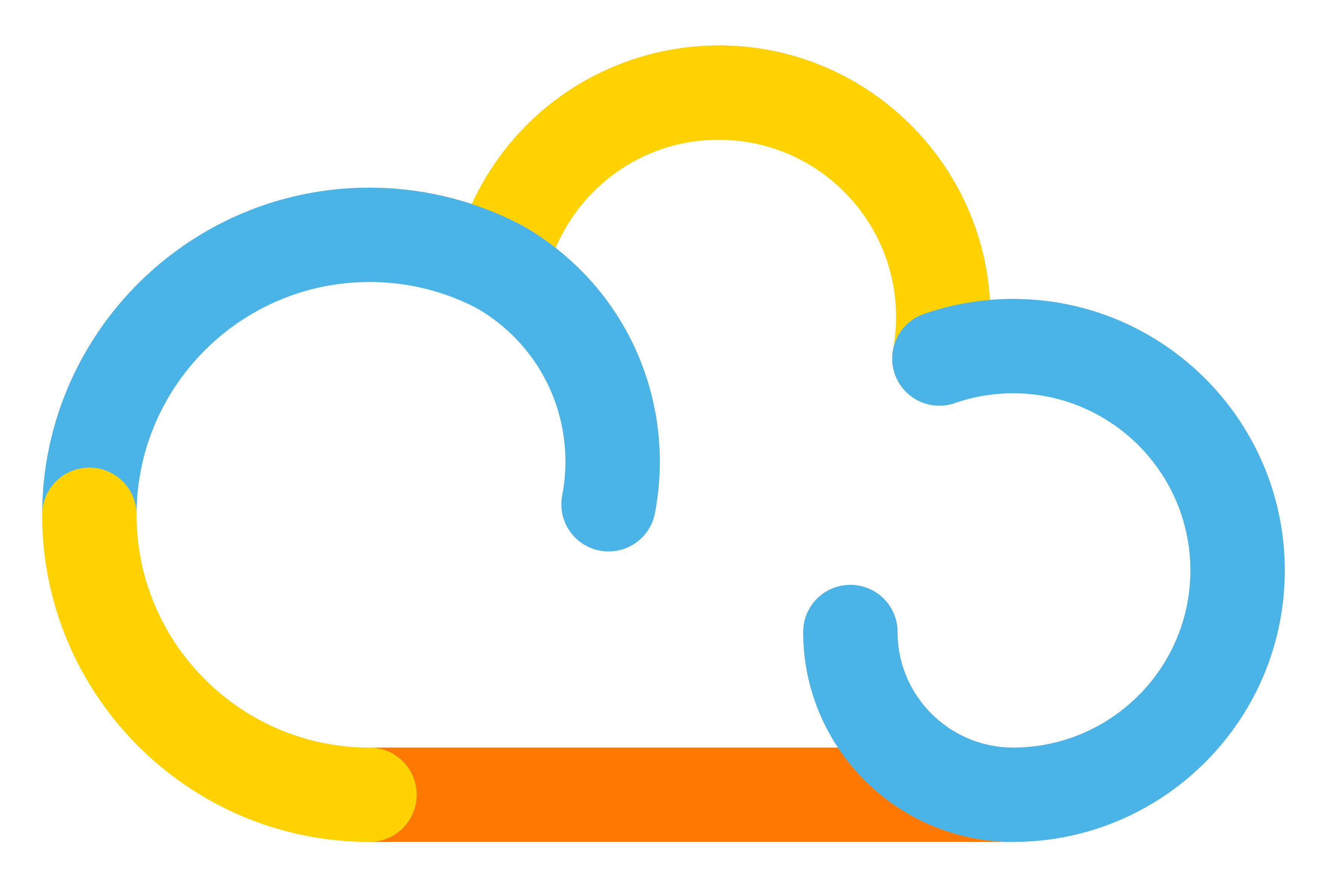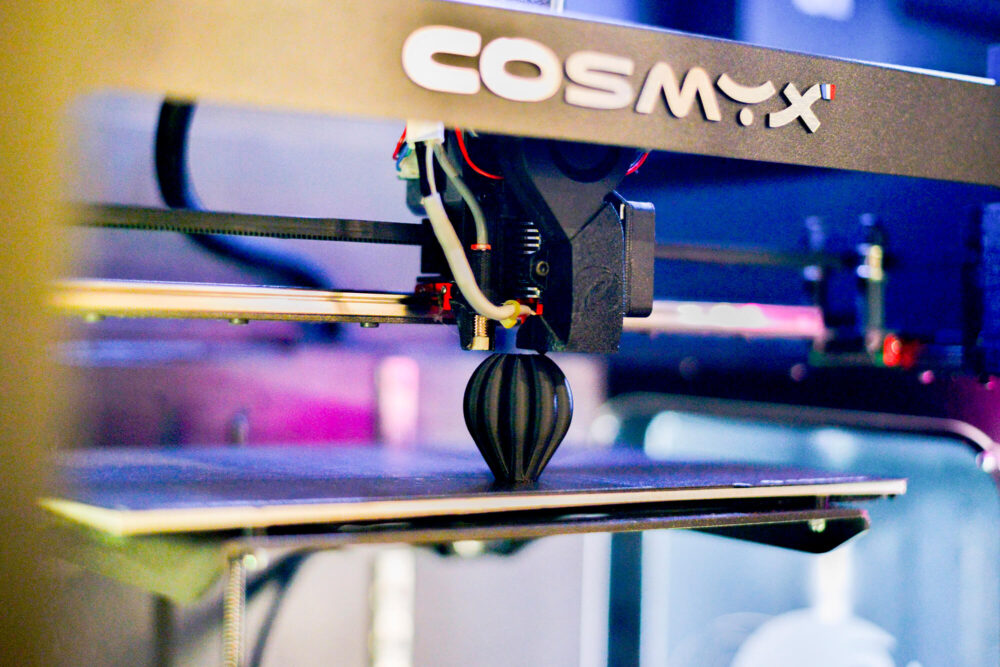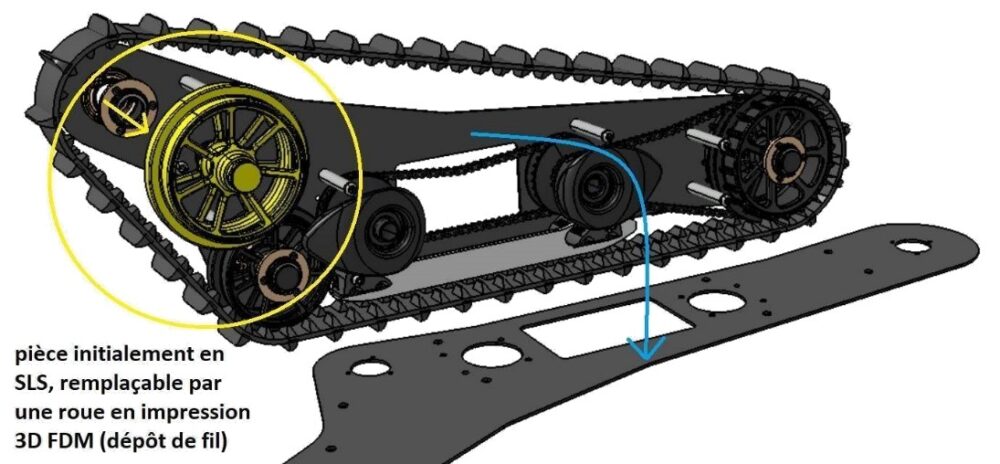Orange and its affiliate Viaccess-Orca (opens in a new window) have partnered with the start-up Cosmyx (opens in a new window) to produce a comprehensive solution for secure 3D printing and decentralized “micro-factories.” This exciting new project was co-developed with KNDS (opens in a new window) France (formerly Nexter), the French branch of the Franco-German defense giant KNDS, with the aim of designing spare parts for the Nerva ground robot. Two Orange 5G Labs are already working with the prototype, which was recently the subject of an evaluation by the armed forces. In this article, we look at the various steps involved in a project destined to serve and assist the French military.
Published: 15/07/2024

6mn reading time
KNDS and Cosmyx get the 5G experience

Business sector
3D printing for the defense sector and armed forces.

Solution
A solution for collaborative experimentation, enabling KNDS to test and trial their solutions (products and services for the defense sector) in real-word conditions, via 3D printing in decentralized micro-factories.

Business needs
High-performance, secure and responsive connectivity, capable of transferring high added-value content in near-real time. A network that will allow critical spare parts to be produced quickly, and in close proximity to military theaters.

What 5G brings to the project
- Security
- Super-fast speeds
- Low latency
Essential assets in order to ensure secure and rapid manufacturing in close proximity to military theaters.
Security, speed and latency: the advantages of 5G highlighted in a particularly sensitive use case!
3D printing is an innovative and fast-growing technology. Its ability to create custom-designed objects on demand, in record time and in close proximity to the end user, are highly valuable assets for industrial or military uses, for example. 3D printing also represents a use case that highlights the key benefits of 5G – in particular its security levels, fast speeds and low latency. It is in this context that Orange and its affiliate, Viaccess-Orca, recently began a collaboration with Cosmyx – a start-up specializing in the design and manufacture of 3D micro-factories – and KNDS France (formerly Nexter), the French arm of Franco-German defense contractor KNDS, in order to securely produce critical spare parts in close proximity to military theaters.
Making spare parts in the midst of military operations: challenge accepted!
On the front lines, military personnel face a critical challenge: the ability to repair their equipment both rapidly and on-site. This partnership was set up to tackle this very challenge, and additive manufacturing* offers the solution.
For ground forces, occupying territory prevents the enemy from advancing and allows your troops to prepare their own advances,” explains Sylvain Kahoun, Head of the additive manufacturing project for the KNDS France group.
Consequently, you have to be able to maintain and repair the equipment deployed in the field as quickly as possible. In the event of an operational emergency, the ability to regenerate equipment potential (i.e. number of kilometers, number of shots, etc.) can be decisive, and this sometimes means assembling versions of parts that could limit the vehicle’s use, or certain functions.
This is what the military refers to as “maintenance in operational condition” (MCO), and herein lie the potential benefits of additive manufacturing. In fact, this process gives armed forces the ability to produce spare parts right on the front lines, rather than having to wait for them to be delivered from storage facilities or a factory. This organizational innovation helps sidestep the logistical difficulties inherently associated with dangerous or difficult-to-access areas.
Secure manufacturing and 3D model files thanks to the Viaccess-Orca solution
While 3D printing offers various advantages in this type of context, it also carries two sizeable challenges: security and quality. The first is essential in the context of a military-industrial project, where the leaking of private data is an unacceptable risk.
Wherever there are digital tools, there are cyber threats,” says Perez Pelage, Head of Emerging Business in charge of the industrial sector at Viaccess-Orca. Our data security solution guarantees that content with high added value and intellectual property are protected, remaining fully confidential and intact throughout the value chain, from the design office to the platform that stores digital models, and then to the production center.
This content, which is created in the KNDS France design office, is encrypted and processed by the Viaccess-Orca data security solution, then decrypted and signature-verified at the 3D printer level, after having been communicated via the Orange 5G network. The Viaccess-Orca security solution also gives the data owner the ability to control the use of model files: they can define who is authorized to use them and on what type of printer, for a given duration and with pre-defined materials. This final point is essential for KNDS France, notably when the model to be printed has a limited number of uses compared to the original part.
A micro-factory “accelerated” by 5G

Once the project specifications had been defined by KNDS France and Viaccess-Orca in order to address the French army’s 3D printing needs, all that remained was to find a 3D printer capable of meeting the project’s requirements and constraints.
It was during a visit to the Orange 5G Lab showroom in Châtillon that I met the Cosmyx team,” recalls Frédéric Havard, Director of Innovative Projects for the Île-de-France region at Orange France. “We quickly made a connection, as Cosmyx could see that 5G was about to open doors to managing multiple data flows .
An Orange 5G starter kit was rapidly provided to the start-up and implemented at its micro-factory, while Orange’s network engineers facilitated the integration of 5G into this cutting-edge equipment.
As we had found the use case to be highly interesting and adaptable to both large groups and SMEs, we decided to present the Cosmyx micro-factory in the Orange 5G Lab spaces at La Défense and Châtillon, adds Frédéric Havard
Soon after, everything came together: Viaccess-Orca’s data security solution, combined with the performance levels and operational maturity of the Cosmyx 3D printer, convinced the KNDS France team of the combo’s potential, and that it was capable of offering a comprehensive response to an urgent technological need.
NERVA robots: a practical (and conclusive) use case!
Created in November 2020, French start-up Cosmyx has experience working with international industrial groups and the armed forces. It is therefore familiar with the most pressing needs encountered by this type of customer, in terms of connectivity and data security.
The advantage of our proposal is that technical knowledge stays within the design office,” explains Anthony Seddiki, Founder of Cosmyx. “We offer guarantees in terms of production integrity and repeatability, all while tapping into the agility offered by 5G
Following an evaluation phase, KNDS France, Viaccess-Orca and Cosmyx launched a full-scale demonstration for the end customer.
We geared the project toward the NERVA family of robots, which is notably one of the KNDS equipment models employed by the French armed forces,” explains Sylvain Kahoun
Two use cases were proposed:
The first involved applying an encryption solution that impedes any reproduction or unsupervised dissemination of the model file for a temporary part, designed using specific criteria for an operational context.
Then came the model file for a part that could act as an emergency replacement for a drive rollers on a defective caterpillar track, whose characteristics would match the original part as closely as possible, and which could be printed using resources and materials available locally.

A strategic asset for the armed forces
An official presentation was made in June 2023 during the first edition of the Additive Manufacturing Village, an initiative set up by the European Defence Agency.
This demonstration proved to be highly convincing, as military personnel from other nations were also able to see how 3D printing had the capacity to produce, in just a few hours, a spare part that enabled the robot to be repaired, and ultimately enabled the mission to be completed,” explains Anthony Seddiki
Although KNDS France is agnostic for security (and printing) solutions, Viaccess-Orca’s proposed solution fully meets our expectations. We were therefore highly satisfied with the project,” concludes Sylvain Kahoun.
This experimental project between Orange, Viaccess-Orca, KNDS France and Cosmyx dispelled any concerns regarding the corruption of sensitive data associated with the use of 3D printing, as well as the ability to control the number of prints for a given model file. It also confirmed the strategic benefits of this type of technology, which addresses the context of rising geopolitical tensions.

*Spotlight: “What exactly is additive manufacturing?”
Also known as 3D printing, this is a procedure that enables objects to be manufactured by adding material in successive layers, as opposed to sculpting from a block of raw material or pouring it into a mold. The part is created using a computer-assisted design tool, or a 3D scanner. This produces a digital file that is sent to the 3D printer. The main materials used for this procedure are plastics, metals and ceramics.
This technology offers a number of advantages for engineers – notably including the possibility of creating shapes that are impossible to produce via other means. Additive manufacturing is starting to become more widespread in various industries, including cutting-edge sectors such as aviation, automobiles, defense and healthcare.

Subscribe to our Orange 5G Lab newsletter
